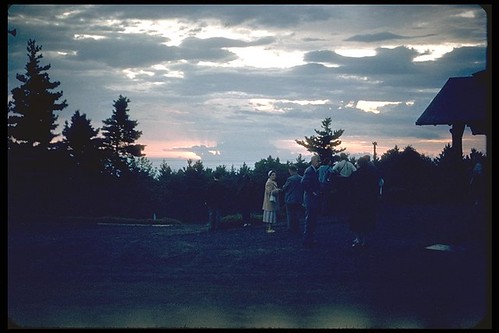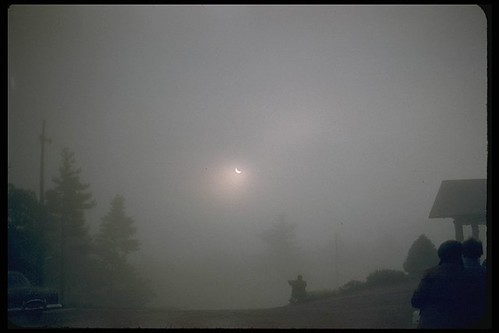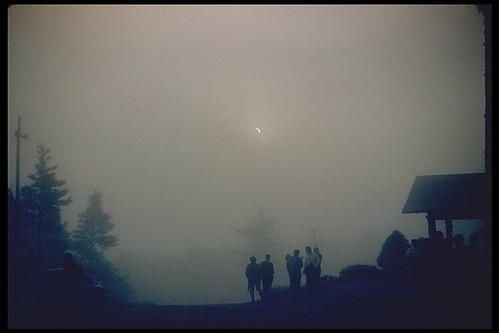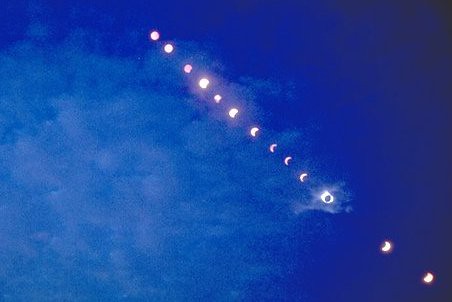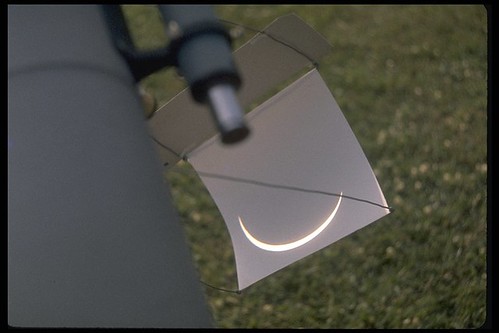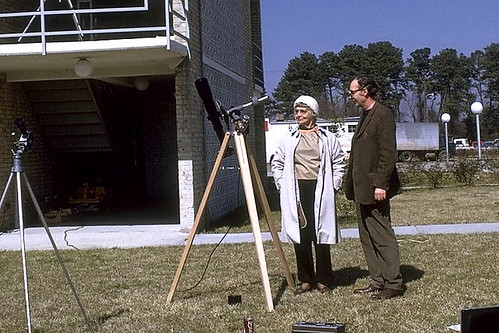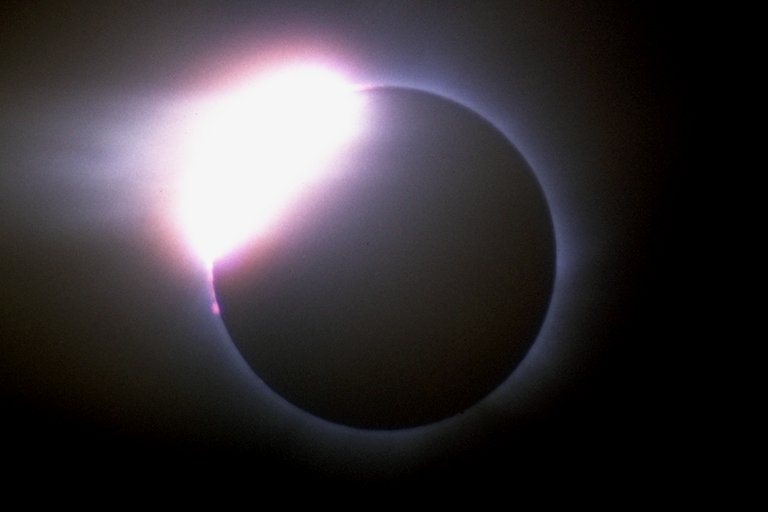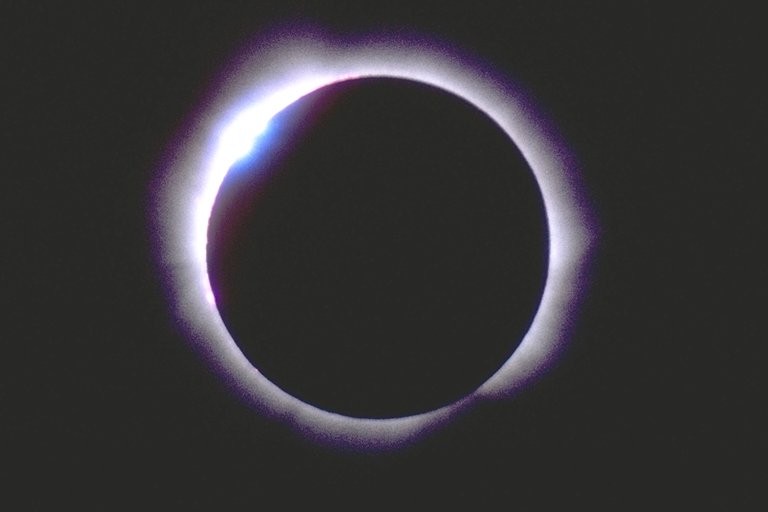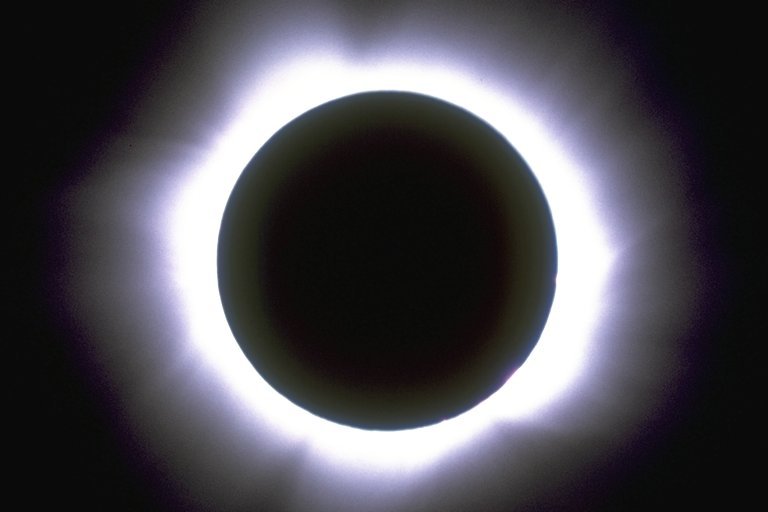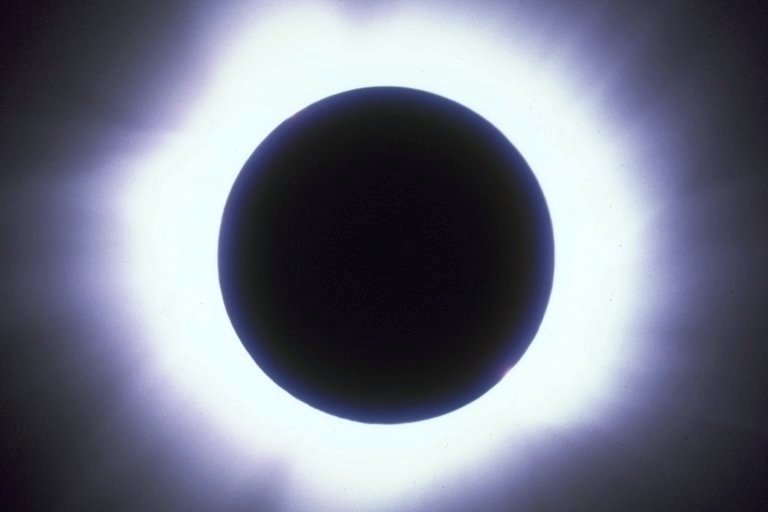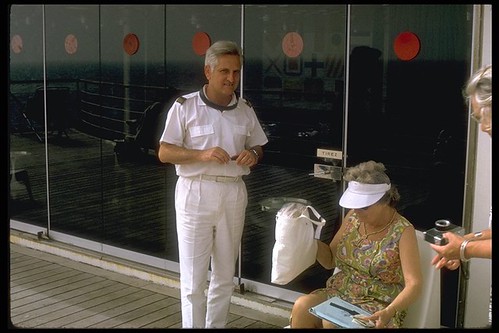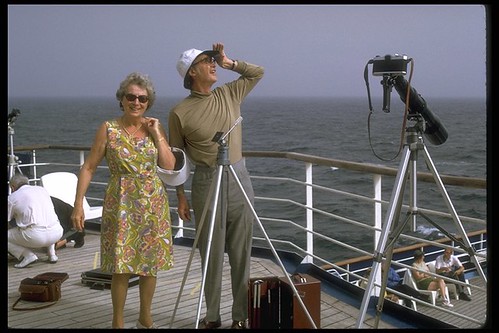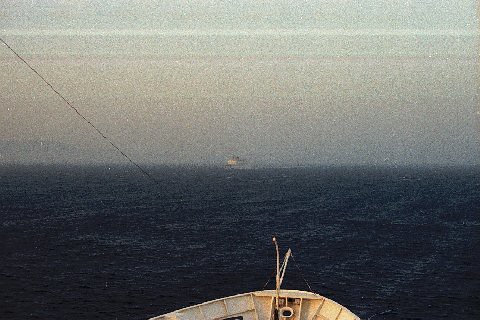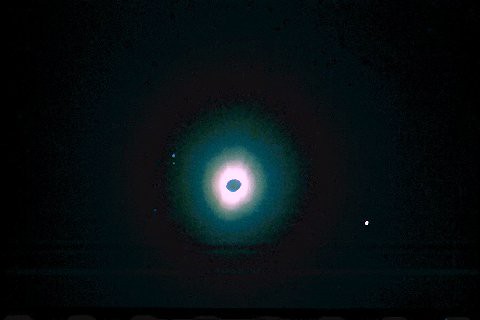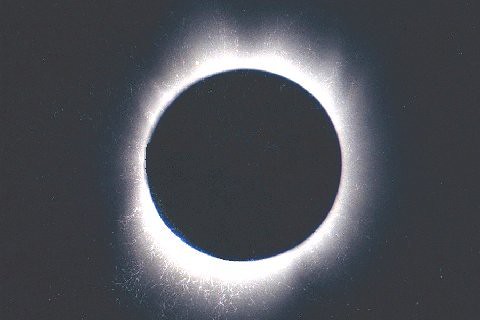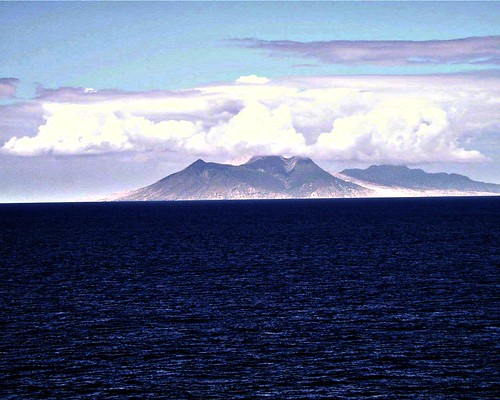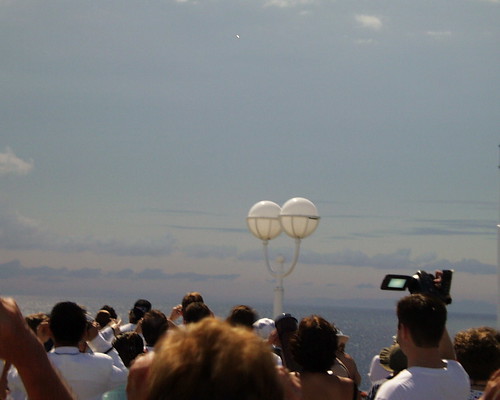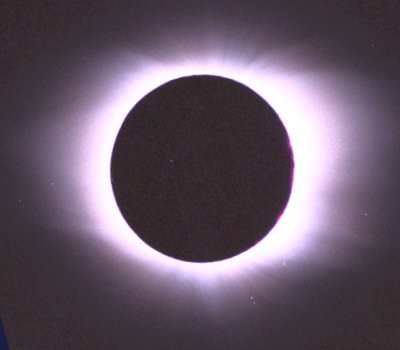Gerard M. Foley
Travel & Photography Collection
My Solar Eclipses
The first total eclipse I saw was in North Conway, NH, on August 31, 1932. Unhappily I have no pictures. Totality occurred in a "mackerel" sky, high thin clouds that afforded a fairly good view of the inner parts of the solar corona.
In 1954 our family went to Copper Harbor, Michigan, on the Keweenaw Peninsula in Lake Superior. This was the easternmost point in the United States on the path of totality of that year's solar eclipse. A few minutes before totality, the clouds which had covered the eastern horizon (in the first picture below) lifted, only to be replaced by the fog you see in the next two, taken just before and just after totality.
Our next eclipse expedition was in 1963 to Plessisville, Quebec. A half hour before totality, in the first of the next set of pictures, the sky was clear, but the scene darkened as the moon covered the sun. On the left was the Canadian Broadcasting Company television camera, and a little left of center a group gathered around my 6" Newtonian telescope. In the center of the picture, the young man squatting is my son Duncan, taking the multiple exposure of the sun and moon which is shown in the next thumbnail. As the air cooled because of the loss of heat from the eclipsed sun, high thin clouds condensed along the eclipse track, just as they had in 1932. Even so, we could see the inner corona during totality, as you can in the multiple exposure. The variation in size and color of the partially eclipsed sun in the picture shows the variations in cloudiness during the progress of the eclipse, and the effect of the filter used during the partial phases. The last picture in the group shows safe viewing of the partially eclipsed sun by projection from my telescope on white cardboard.
The "perfect eclipse" came in 1970, in Williamston, NC. On the left below are the dozens of optical instruments set up behind the Holiday Inn and the brilliant blue sky on the day of the eclipse. We could go into a motel room to see the eclipse in Mexico City on color television, then come out to see for ourselves. On the right are my wife and I and the 800mm f8 lens with which I took the five frames below.
Here are the "diamond ring" at the beginning of totality, three successively longer exposures of the eclipsed sun, and the "diamond ring" at the end of eclipse.
If these pictures make you feel you know what a total eclipse of the sun looks like, you are mistaken. No photographic process can equal the sight of an eclipse in a clear sky. Besides, you have not had the fun of traveling to the eclipse line, nor the trepidation about the weather!
A composite of the images of this eclipse, including some not shown here, are at another eclipse page.
In 1972 we made a trip to Paspebiac on the south shore of the Gaspe Peninsula in Quebec. It was on this occasion that we met the late Prof. Waltmaier, from Zurich, Switzerland, who at that time was the custodian of the famous Zurich sunspot numbers. Prof. Waltmaier had been on the centerline of 28 total eclipses. When I asked him the cause of the pearly appearance of the corona (in 1970) he looked at me for a long time, and then said "I never looked". He had been hidden under a dark cloth manipulating instruments during all of the eclipses! Heavy cloud prevented us (and Prof. Waltmaier) from seeing the 1972 eclipse at all.
We had a more successful trip in 1973 when we sailed from Casablanca in Morocco in the French car ferry "Massalia" to view the total eclipse of that year from the Atlantic Ocean off the Mauretanian Coast.
We had no clouds, but the dust blown off the Sahara Desert made the viewing poorer than that for our "perfect" 1970 eclipse.
As the following two pictures show, photography from a floating ship is not quite as good as from the steady ground.
On February 26, 1998 I and my grandson Ryan Baker were aboard the ship "Monarch of the Seas" in the Caribbean near the island of Montserrat.
We had as good a view from the Black Sea for the eclipse of August 11, 1999!
My trip to South Africa with my grandson Karl Baker in December 2002, in the hope of seeing the total eclipse from the Indian Ocean, was not successful. We were totally clouded out! The animals were very interesting, though.
On March 29,2006, my son Duncan and I witnessed my fifth clear sky eclipse from the ship Costa Fortuna off the coast of Turkey in the Mediterranean. This was my tenth visit during 74 years to the centerline of a total eclipse of the sun.. During 74 years twice I was completely clouded out.
